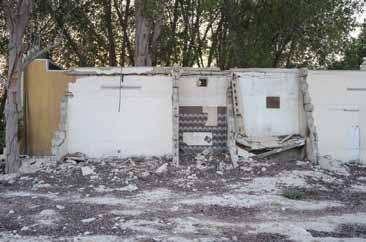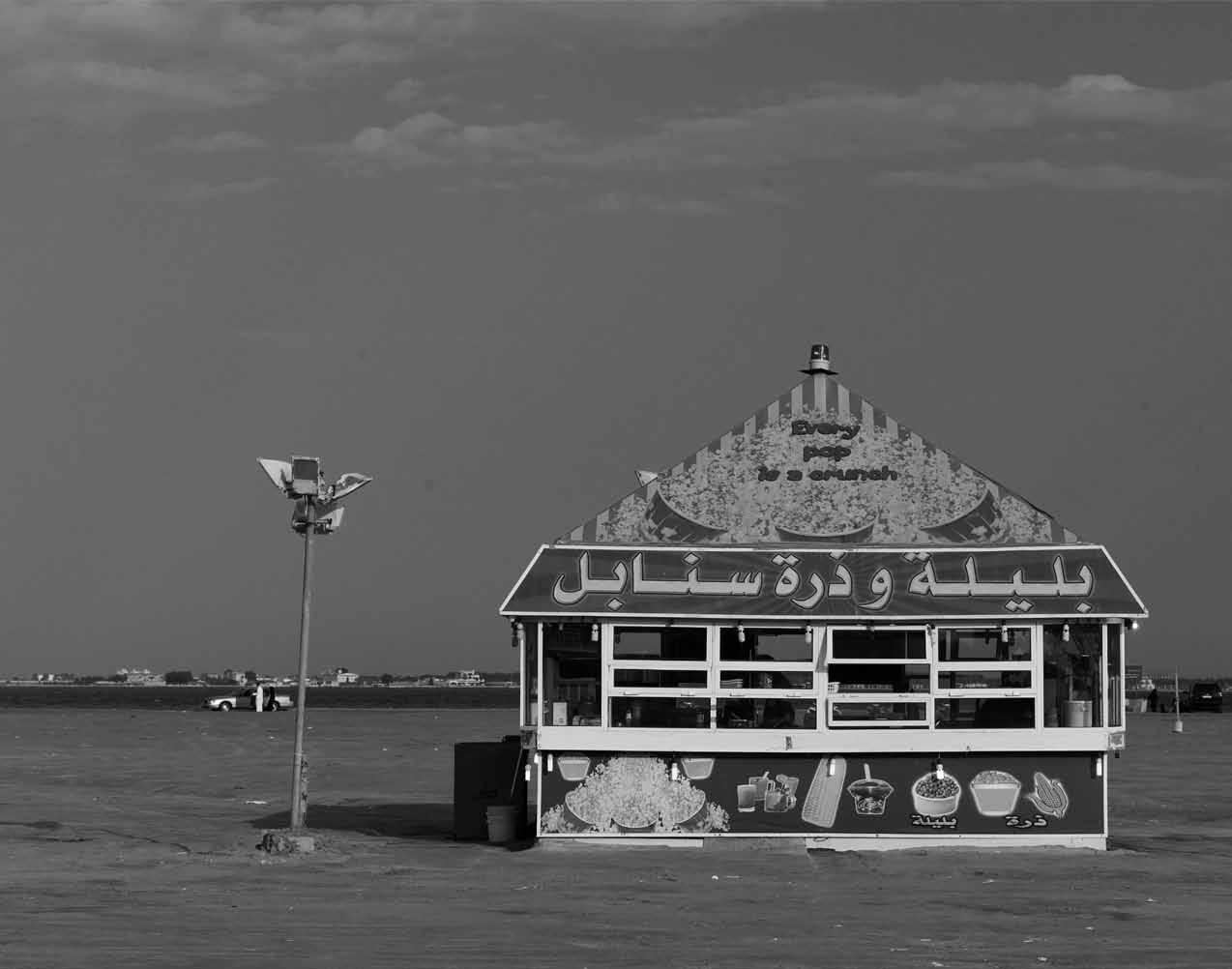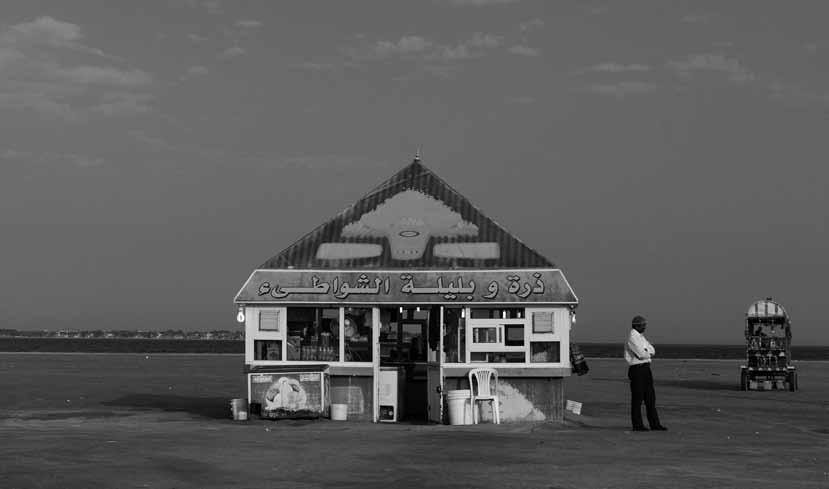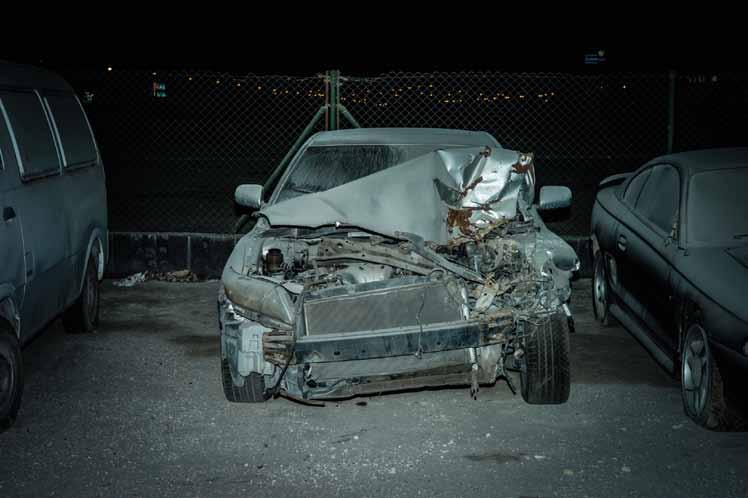
5 minute read
For Your Inconsideration
from Tribe 09
For the first time at Bait Al Salmaniya, and for most of the region, an intensely conceptual and strictly typological photographic exhibition was presented. Although typological photography has spread globally, and more recently seeped into Bahrain, this is one of the first exhibitions dedicated solely to this style. For a public accustomed to street, landscape and journalistic photography, this exhibition is likely to turn many heads, as it separates itself from the pack with its unusual content and approach.
At photography’s inception, it was expensive and timely, and available to the few and privileged–that meant only the decidedly important could be the subject of a picture. In today’s modern world, even though cameras are available to the masses, that concept remains. This brings us to our four photographers, capturing the discarded and deteriorating types; ascending them to a stage.
Advertisement
At first glance, most of these works may appear meaningless, causing the audience to question why anyone would photograph and exhibit wrecked cars, as Faris Algosaibi has. Why in this manner? Each image is shot at nearly identical angles, at night, and with a front-facing view. Algosaibi has unified the subject into a single frame; a mugshot of abandoned cars. He removes external influences exposing only the uniqueness of each individual car. He documents their state, and acknowledges their existence, before they are removed from the scene. Hanan Hassan Al Khalifa’s Ageing Aphrodites may be equally confusing: playing with the collision of aesthetics and the paradox of beauty and decay. By photographing posters of beautiful women, she captures the effect of the flow of time on the subject, rather than a frozen moment in time. In doing so, she comments on the human condition: a photograph of a deteriorating photograph. Not only does this series of images represent a continuing line of time and decline it also acts as a mirror: allowing the viewer to question their own mortality and social depictions of female beauty as timeless and enduring.
Bader Al Balawi’s kiosks are framed by the empty sky and horizon. Similar in nature to Algosaibi’s abandoned cars, these kiosks are documented in a manner that creates the impression that the images are identical at first, until the details of each place reveal themselves: the lights, people, and cars re dotted across the landscape. His final image is the bare seafront that serves as a nod to the kiosks ephemeral nature and which are fleeting in the face of persistent large-scale urban developments.
Asma Murad’s structures reach far beyond the image she presents. In showing decrepit architecture and silent abandoned homes, she invites that audience to view these places as stages. A timeline of events sit, at the core of these images, and we are asked to contemplate the human history that unfolded and took place at these locations.
What is most impressive about this collection of four artists is their derivation from the expected. Rather than being concerned with beautiful or precious objects, they shine light on overlooked and unwanted elements of the region’s everchanging landscape and ask what these objects represent in today’s modern world. In moving beyond photography’s typical purpose of capturing a single moment in time, they are also able to portray the passage of time itself.

“These photographs represent the remains of buildings that have been demolished to give way to new construction. These traces, at some point, provided shelter and security to those inhabiting them before they decided to relocate. They have witnessed many stories (birth of new children, university graduations, marriages of elderly couples, the departure of elders, and ending of relationships of couples that were once madly in love) and remain keepers of deep secrets. These traces stand now in silence before they disappear indefinitely. Through these photographs, I invite the viewer to contemplate what it was like to live in these abandoned places when they were once inhabited.”

Bader Al Balawi, Balilah Khushks (2014) 12 photos (typology) 50 x 33 cm
This experimental photojournalistic work emerged from the artist’s observation, and appreciation for the forms of the kiosks and their alignment stretched out across the beach, on his daily commute. There are two transitional states in this collection. The first is the relationship and intercommunication between each of the images to one another, and the different activities that occurred on the same space. The second is the disappearance of these kiosks, which
were eventually removed by the municipality to be replaced by modern and fashionable food trucks.



Faris Algosaibi Abandoned (2017-2018) Print on photo rag, 370 x 130 cm
“It is hard to think of anything less valuable or desirable than an abandoned old car. Or worse still, a wrecked abandoned car. A picture of such a car is
certainly worth even less. However, if you take enough pictures, the cars take on personalities. They can be anthropomorphised, become sculptures,
or tell a [tragic] story. These images were selected from a series comprising 300 images.”



Hanan Hassan Al Khalifa, Clockwise: Front Looking, Left Side Showing, Second Left and Touching Herself
From the series Ageing Aphrodites (2017) 40.6 x 50.8 cm
Six authentic images on the wall, left for a very long time, welcoming women to enter a beauty salon to
change their appearances to be like Aphrodite. However, nothing lasts as time is fleeting and impermanent. These places portray beautiful images of white-skinned movie starts, and lure women into a single construct
of beauty, void of individuality. The posters kept outside shrank and lost their colours, they became damaged
from the sun, rain, wind, dust, and other environmental elements. Indeed, nothing lasts forever.














